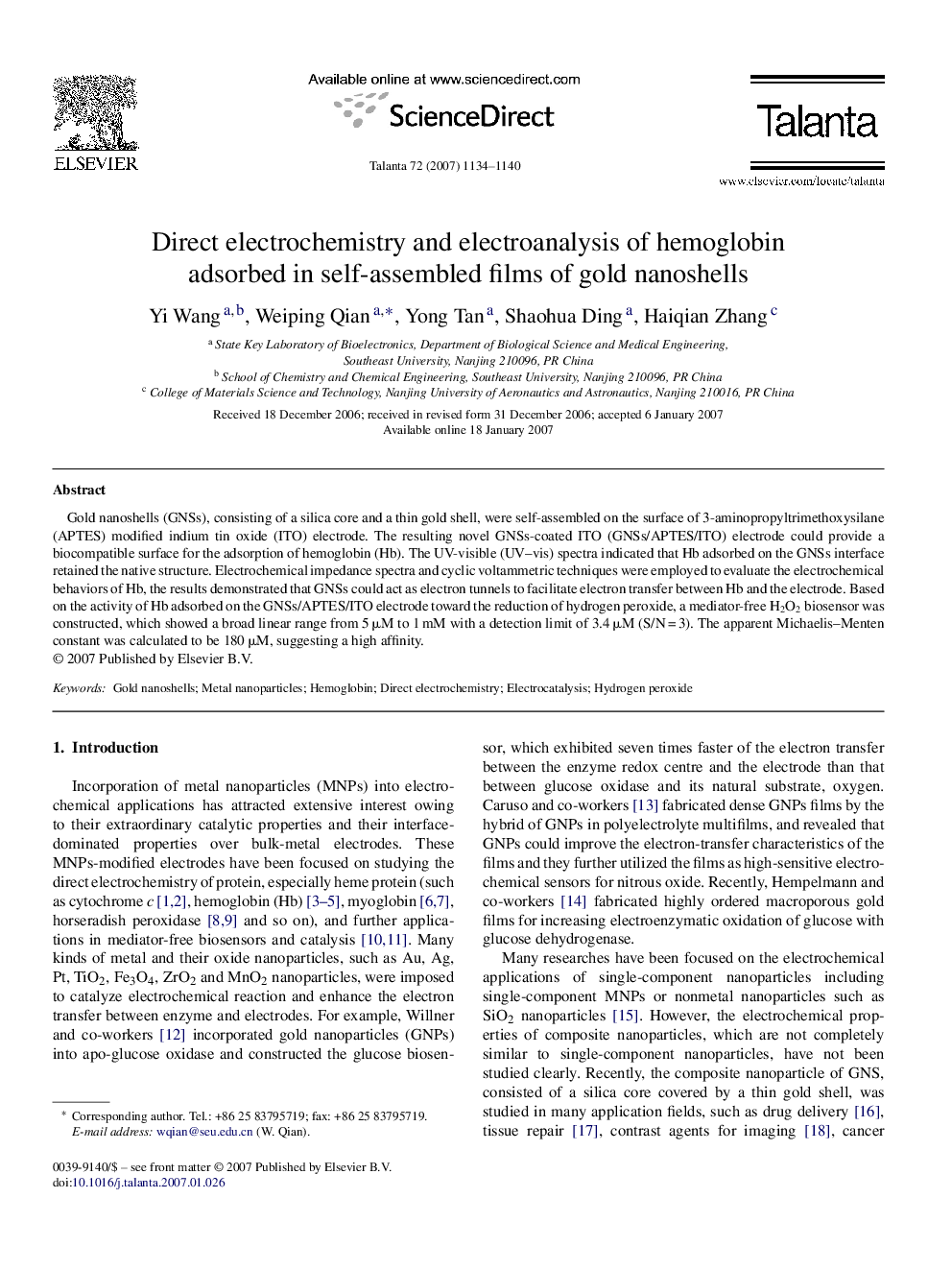| Article ID | Journal | Published Year | Pages | File Type |
|---|---|---|---|---|
| 1245011 | Talanta | 2007 | 7 Pages |
Gold nanoshells (GNSs), consisting of a silica core and a thin gold shell, were self-assembled on the surface of 3-aminopropyltrimethoxysilane (APTES) modified indium tin oxide (ITO) electrode. The resulting novel GNSs-coated ITO (GNSs/APTES/ITO) electrode could provide a biocompatible surface for the adsorption of hemoglobin (Hb). The UV-visible (UV–vis) spectra indicated that Hb adsorbed on the GNSs interface retained the native structure. Electrochemical impedance spectra and cyclic voltammetric techniques were employed to evaluate the electrochemical behaviors of Hb, the results demonstrated that GNSs could act as electron tunnels to facilitate electron transfer between Hb and the electrode. Based on the activity of Hb adsorbed on the GNSs/APTES/ITO electrode toward the reduction of hydrogen peroxide, a mediator-free H2O2 biosensor was constructed, which showed a broad linear range from 5 μM to 1 mM with a detection limit of 3.4 μM (S/N = 3). The apparent Michaelis–Menten constant was calculated to be 180 μM, suggesting a high affinity.
